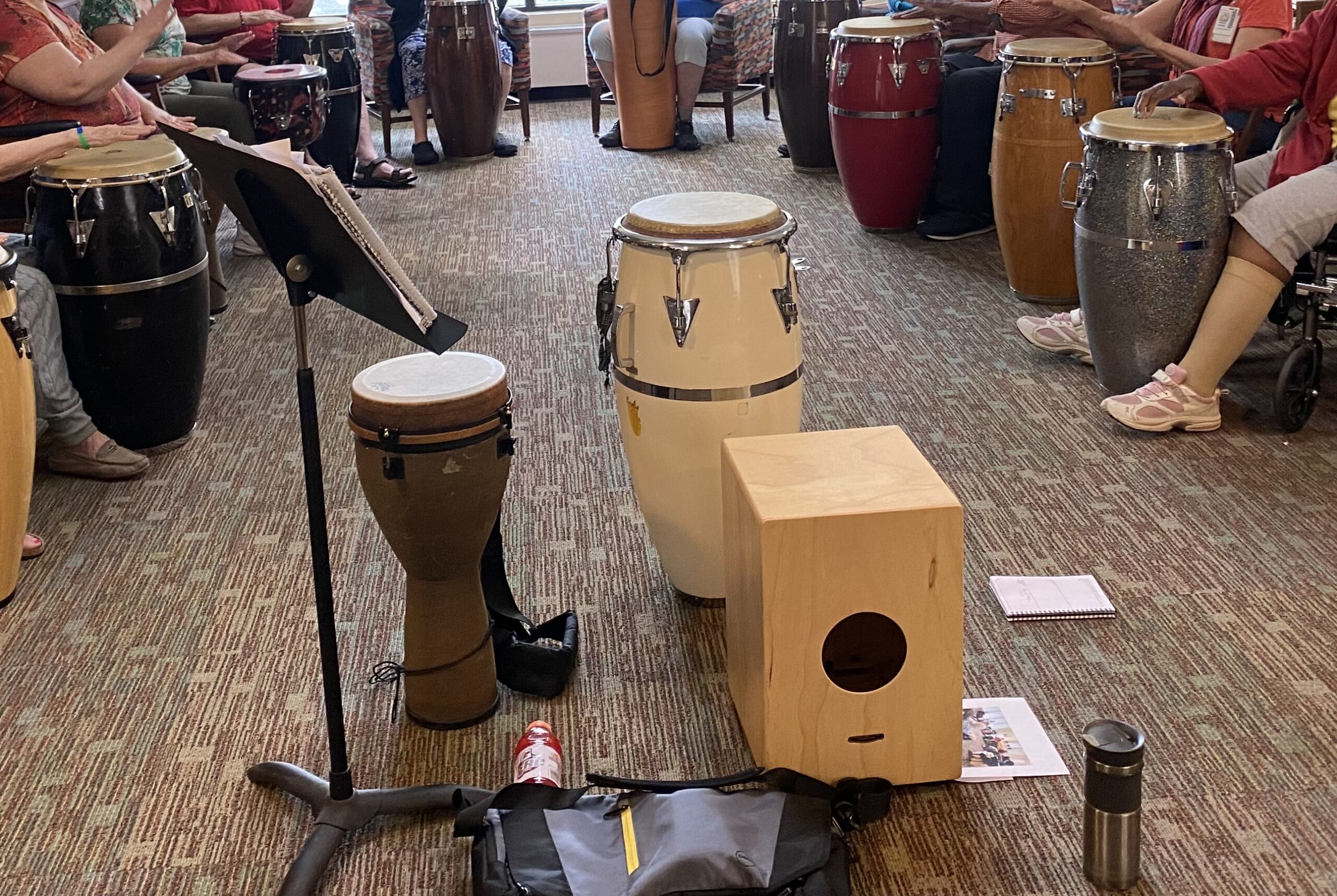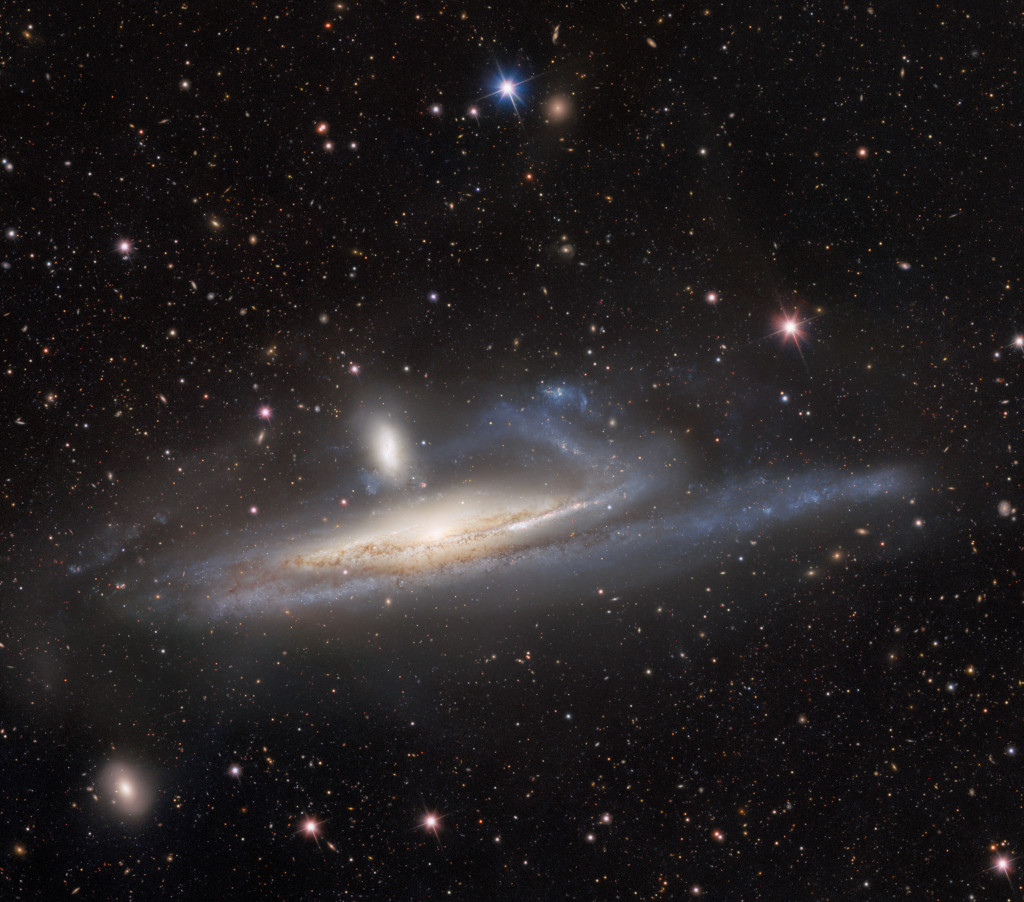Blog
George “Buddy” Guy (born July 30, 1936) is an American blues guitarist and singer. He is an exponent of Chicago blues who has influenced generations of guitarists including Eric Clapton, Jimi Hendrix, Jimmy Page, Keith Richards, Stevie Ray Vaughan, Jeff Beck, Gary Clark Jr. and John Mayer. In the 1960s, Guy played with Muddy Waters as a session guitarist at Chess Records and began a musical partnership with blues harp virtuoso Junior Wells.
Guy has won eight Grammy Awards and a Lifetime Achievement Award, the National Medal of Arts, and the Kennedy Center Honors. Guy was ranked 23rd in Rolling Stone magazine’s “100 Greatest Guitarists of All Time“. His song “Stone Crazy” was ranked 78th in the Rolling Stone list of the “100 Greatest Guitar Songs of All Time”. Clapton once described him as “the best guitar player alive”. In 1999, Guy wrote the book Damn Right I’ve Got the Blues, with Donald Wilcock. His autobiography, When I Left Home: My Story, was published in 2012.
more...The Eagle Nebula (catalogued as Messier 16 or M16, and as NGC 6611, and also known as the Star Queen Nebula) is a young open cluster of stars in the constellation Serpens, discovered by Jean-Philippe de Cheseaux in 1745–46. Both the “Eagle” and the “Star Queen” refer to visual impressions of the dark silhouette near the center of the nebula, an area made famous as the “Pillars of Creation” imaged by the Hubble Space Telescope. The nebula contains several active star-forminggas and dust regions, including the aforementioned Pillars of Creation. The Eagle Nebula lies in the Sagittarius Arm of the Milky Way.

born 7-29-1937 to died 6-10-22 Ellyn was born in Des Moines, Iowa to Glen and Vera Cornelison on August 29, 1937. She went to Lincoln High School in Des Moines, Iowa , and graduated in 1956. She went on to study classical piano at Drake University. In 1979 she became a jazz musician full time and was a critically acclaimed vocalist in a very challenging field. She released several albums for Capri records. In 1993 she played on the nationally syndicated NPR radio show “Marian McPartland’s Piano Jazz.” She was a longtime performer throughout her home base in Colorado as well as playing on tour in Holland, Ireland, Germany (where she had her own fan club), China and the United States. She had many outstanding accomplishments in her career and is very well known and beloved in the Denver music community. Had she chosen to move to a larger city it’s highly probable she would’ve achieved much greater fame. Her breathy seductive voice was incredibly compelling as well as her prodigious keyboard skills.
more...Joe Beck (July 29, 1945 – July 22, 2008) was an American jazz guitarist who was active for over 30 years.
Born in Philadelphia, Beck moved to Manhattan in his teens, playing six nights a week in a trio setting, which gave him an opportunity to meet various people working in the thriving New York music scene. By the time he was 18, Stan Getz hired him to record jingles, and in 1967 he recorded with Miles Davis. By 1968, at age 22, he was a member of the Gil Evans Orchestra.
more...Charles Henry Christian (July 29, 1916 – March 2, 1942) was an American swing and jazz guitarist. He was among the first electric guitarists and was a key figure in the development of bebop and cool jazz. He gained national exposure as a member of the Benny Goodman Sextet and Orchestra from August 1939 to June 1941. His single-string technique, combined with amplification, helped bring the guitar out of the rhythm section and into the forefront as a solo instrument. For this, he is often credited with leading to the development of the lead guitar role in musical ensembles and bands.
Christian was born in Bonham, Texas. His family moved to Oklahoma City, Oklahoma, when he was a small child. His parents were musicians. He had two brothers: Edward, born in 1906, and Clarence, born in 1911. Edward, Clarence, and Charlie were all taught music by their father, Clarence Henry Christian. Clarence Henry was struck blind by fever, and in order to support the family he and the boys worked as buskers, on what the Christians called “busts.” He would have them lead him into the better neighborhoods, where they would perform for cash or goods. When Charles was old enough to go along, he first entertained by dancing. Later he learned to play the guitar, inheriting his father’s instruments upon his death when Charles was 12.
more...
High-speed outflows of molecular gas from a pair of actively forming young stars shine in infrared light, revealing themselves in this NIRcam image from the James Webb Space Telescope. Cataloged as HH (Herbig-Haro) 46/47, the young stars are lodged within a dark nebula that is largely opaque when viewed in visible light. The pair lie at the center of the prominent reddish diffraction spikes in the NIRcam image. Their energetic stellar jets extend for nearly a light-year, burrowing into the dark interstellar material. A tantalizing object to explore with Webb’s infrared capabilities, this young star system is relatively nearby, located only some 1,140 light-years distant in the nauticalconstellation Vela.

Delfeayo Marsalis ( born July 28, 1965) is an American jazz trombonist, record producer and educator.
Marsalis was born in New Orleans, the son of Dolores (née Ferdinand) and Ellis Louis Marsalis, Jr., a pianist and music professor. He is also the grandson of Ellis Marsalis, Sr., and the brother of Wynton Marsalis(trumpeter), Branford Marsalis (saxophonist), and Jason Marsalis (drummer). Delfeayo also has two brothers who are not musicians: Ellis Marsalis III (b. 1964) is a poet, photographer and computer networking specialist based in Baltimore, and Mboya Kenyatta (b. 1970), who has been diagnosed with autism and was the primary inspiration for Delfeayo’s founding of the New Orleans-based Uptown Music Theatre. Formed in 2000, UMT has trained over 300 youth and staged eight original musicals, all of which are based upon the mission of “community unity”.
more...Michael Bernard Bloomfield (July 28, 1943 – February 15, 1981) was an American guitarist and composer, born in Chicago, Illinois, who became one of the first popular music superstars of the 1960s to earn his reputation almost entirely on his instrumental prowess, as he rarely sang before 1969. Respected for his guitar playing, Bloomfield knew and played with many of Chicago’s blues musicians before achieving his own fame and was instrumental in popularizing blues music in the mid-1960s. In 1965, he played on Bob Dylan’sHighway 61 Revisited, including the single “Like a Rolling Stone“, and performed with Dylan at that year’s Newport Folk Festival.
Bloomfield was ranked No. 22 on Rolling Stone‘s list of “100 Greatest Guitarists of All Time” in 2003 and No. 42 by the same magazine in 2011. He was inducted into the Blues Hall of Fame in 2012 and, as a member of the Paul Butterfield Blues Band, was inducted into the Rock and Roll Hall of Fame in 2015.
Bloomfield was born into a wealthy Jewish Chicago family. Bloomfield’s father, Harold Bloomfield, was born in Chicago in 1914. Harold’s father, Samuel Bloomfield, started Bloomfield Industries in the early 1930s. After Samuel passed away, Harold and his brother, Daniel, inherited the company. Bloomfield’s mother, Dorothy Klein, was born in Chicago in 1918 and married Harold in 1940. She came from an artistic, musical family, working as an actress and a model before marrying Harold. Bloomfield died in San Francisco on February 15, 1981. He was found seated behind the wheel of his car, with all four doors locked. According to police, an empty Valium bottle was found on the car seat, but no suicide note was found. The medical examiner who performed the autopsy ruled the death accidental overdose, due to cocaine and methamphetamine poisoning.
more...David “Junior” Kimbrough (July 28, 1930 – January 17, 1998) was an American blues musician. His best-known works are “Keep Your Hands off Her” and “All Night Long”. In 2023, he was inducted in the Blues Hall of Fame.
Kimbrough was born in Hudsonville, Mississippi, and lived in the north Mississippi hill country near Holly Springs. His father, a barber, played the guitar, and Junior picked his guitar as a child. He was apparently influenced by the guitarists Lightnin’ Hopkins, Mississippi Fred McDowell and Eli Green.
more...The Traditional Structure of the Seguiriya
When following the traditional structure, the seguiriya proceeds as follows:
- It begins with a strong guitar strumming, which introduces the singer.
- The first lyrics are short and emotionally intense, topped off with guitar strumming.
- This is followed by a brave singing verse, which is also finished off with the guitar, giving way to the change of lyrics.
- The seguiriya ends with the guitar, strongly playing to the beat.
Singing and Coplas
It is believed that the seguiriya comes from the plañideras, among other reasons, because of the type of singing, which is very somber and uses death as its main theme. Besides, it can be recognized for its lyrics full of moan, also called quejíos. These features are why the seguiriya are considered a pure cante jondo (profound song or deep song), which came along before the palo seco (the dry style of flamenco that isn´t accompanied by guitar music).
more...Absorbing small galaxies that are too close and are captured by the Milky Way’s gravity. In fact, thepractice is common in the universe and illustrated by this striking pair of interacting galaxies from the banks of the southern constellation Eridanus, The River. Located over 50 million light years away, the large, distorted spiral NGC 1532 is seen locked in a gravitational struggle with dwarf galaxy NGC 1531, a struggle the smaller galaxy will eventually lose. Seen nearly edge-on, spiral NGC 1532 spans about 100,000 light-years. The merging galaxies are captured in this sharp image from the Dark Energy Camera mounted on the National Science Foundation’s Blanco 4-meter Telescope at Cerro Tololo Inter-American Observatory in Chile. The NGC 1532/1531 pair is thought to be similar to the well-studied system of face-on spiral and small companion known as M51.

Barbara Gracey Thompson MBE (27 July 1944 – 9 July 2022) was an English jazz saxophonist, flautist and composer. She studied clarinet, flute, piano and classical composition at the Royal College of Music, but the music of Duke Ellington and John Coltrane made her shift her interests to jazz and saxophone. She was married to drummer Jon Hiseman of Colosseum from 1967 until his death in 2018.
more...Nicholas Wells Reynolds (July 27, 1933 – October 1, 2008) was an American folk musician and recording artist. Reynolds was one of the founding members of The Kingston Trio, whose folk and folk-style material captured international attention during the late Fifties and early Sixties.
Born in San Diego and growing up in Coronado, California, his passions as a boy growing up were tennis, skin-diving and singing with his family. His father, a Navy captain, was an avid guitar player who brought back songs from his travels around the world. He taught Nick the guitar and ukulele, and the family spent many nights singing and harmonizing for pure enjoyment. Nick enrolled in Menlo College in 1954 as a business major and met Bob Shane in an accounting class. They soon started socializing together, and this in turn led to playing music, initially as a way of being popular at parties — Shane’s guitar and Reynolds’ bongosbecame a fixture at local fraternity gatherings. After a few weeks of this, Shane introduced Reynolds to Dave Guard
more...Jean Toussaint (born July 27, 1960) is an American jazz tenor and soprano saxophonist.
Toussaint was born in Aruba, Dutch Antilles, and was raised in Saint Thomas and New York City. He learned to play calypso as a child and attended Berklee College of Music in the late 1970s, studying under Bill Pierce (saxophonist). In 1979 he formed a group with Wallace Roney and from 1982 to 1986 was a member of Art Blakey and the Jazz Messengers alongside Terence Blanchard, Donald Harrison, Mulgrew Miller and Lonnie Plaxico. With Blakey he recorded three studio albums, including New York Scene, which won a Grammy for Best Jazz Instrumental Performance.
In 1987, Toussaint moved to London, England, when he was invited to be artist-in-residence at the Guildhall School of Music by Lionel Grigson, at the time the school’s professor of jazz. In the late 1980s Toussaint had a regular slot at the fabled Dingwalls club in Camden Town on Sunday afternoons. Since then, Toussaint has maintained a profile as a band leader in the UK and Europe, playing with British musicians including, among others, Steve Williamson, Courtney Pine, Julian Joseph, Jason Rebello, Cleveland Watkiss. Toussaint has also performed in groups led by McCoy Tyner, Gil Evans, Kirk Lightsey, Cedar Walton, Max Roach, Horace Silver and Jeff Tain Watts. In addition he has collaborated with Lionel Loueke.
Toussaint has released 10 albums as a leader, his most recent entitled Tate Song in February 2014 with LYTE Records.
In 2015/16 Toussaint devised a project dedicated to his mentor Blakey. The project was entitled “Roots & Herbs: The Blakey Project” and featured an all-star lineup of British jazz musicians, including Julian Joseph, Byron Wallen, Dennis Rollins, Jason Rebello and Shane Forbes. The group toured the UK extensively throughout 2015 / 2016
more...More Posts
- World Fusion with Nordic Raga
- Daily Roots with Tony Clarke
- “Second Chance” by zAmya Theater East Phillips Park
- Rhythm Roots Workshop PRI Minneapolis
- The Cosmos with NGC 1892
- Nicholas Payton Day
- George Gershwin Day
- World Music with Northern Cree
- Daily Roots with Slyford Walker
- Rhythm Roots Workshop at PRI St Louis Pk
- The Cosmos with NGC 6872
- Sam Rivers Day
- Shadow Wilson Day
- World Music with Noe hernandez cantarell
- Daily Roots with the Twinkle Brothers
- The Cosmos with NGC 3981
- Fats Navarro Day
- Blind Melon Jefferson Day
- World Music with Eugenia Georgieva
- Daily Roots with Playing for Change